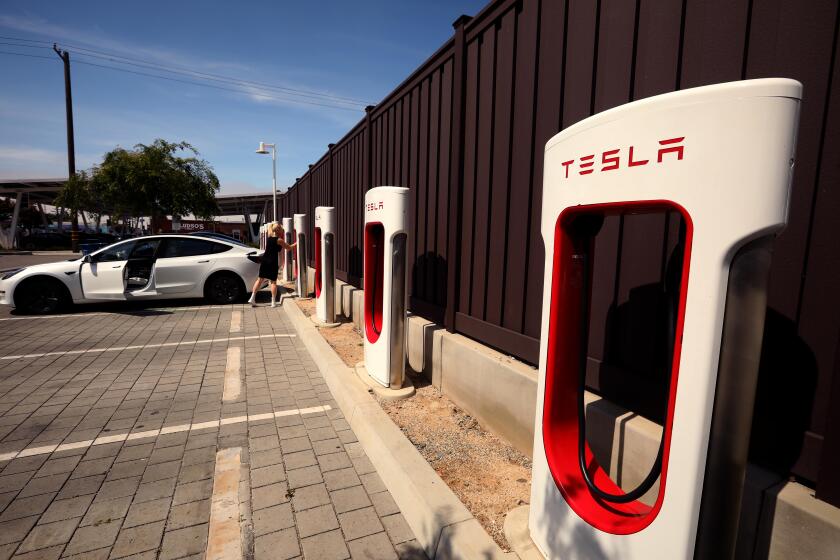Fill ‘em with pure nitrogen, please
At one time, every corner gas station offered free compressed air to anybody who would drive up. Eventually, the stations took that away and started to charge for the compressed air.
But all along that compressed air was less than ideal for tires. In many cases, gas station air was poorly filtered, meaning lots of moisture, oil and other crud was getting inside tires. And while the air we breathe works fairly well for the human body, it is less than ideal for car tires.
Tire retailers are beginning to offer pure nitrogen gas as an alternative to compressed air, which has been the standard as along as pneumatic tires have been on the market.
As absurdly expensive tires and wheels have become more common on vehicles, it makes greater sense to take care of them -- and nitrogen does offer a number of big benefits, mainly in reducing leakage that lowers tire pressure.
Using pure nitrogen with all of the water and oxygen removed will reduce oxidation of the tire rubber and metal surfaces on the wheel.
Nitrogen is also supposed to move through tire rubber three times more slowly. Without any impurities, nitrogen also is subject to less expansion and contraction as the tire heats up and cools down during usage.
Regularly checking the air pressure in your tires is one of the most important parts of maintaining the safety of any vehicle, though many people never bother to do it. Keeping tire pressure at its proper level also dramatically improves fuel economy.
The air we breathe is about 79% nitrogen, with oxygen, carbon dioxide and other gases making up the balance. But the small amount of oxygen makes a big difference, obviously. Oxygen is highly active, causing corrosion and aging in many different types of material. By contrast, nitrogen is an inert gas, making it ideal as a filling medium where you want to retard corrosion.
It may seem like a gimmick, but nitrogen has long been used as a filling medium in the racing circuit, the military and the airline industry. But they have traditionally used bottled compressed nitrogen, which is far too exotic and expensive for tire retailers.
Nitrogen began making its first appearance on the U.S. retail market in a small way in recent years, but it took off last year as major compressor manufacturers introduced low cost systems for retailers.
Ingersoll-Rand, the nation’s largest manufacturer of large compressors, introduced a system for retailers about a year ago. Other systems are on the market from smaller manufacturers, as well.
Rather than using bottled nitrogen, the Ingersoll-Rand system and others like it use membrane filters to remove the other gases from the air. It also uses three filters with charcoal and coal to remove water and oil from the gas.
“When we first began talking about this a year and a half ago, people thought it was a joke,” said Ryan Lang, Ingersoll-Rand’s marketing manager for the system. “Now people say it is inevitable.”
So far, a tiny percentage of the tens of thousands of tire retailers in the nation are offering it. The biggest chain to jump on the nitrogen bandwagon is Costco, the discount retailer. Several other major retailers are testing the systems.
The tire industry has endorsed the system. Goodyear and Michelin have issued technical service bulletins to their retailers saying that the use of nitrogen is acceptable and good practice.
How much does it cost?
It depends on where you buy your tires. Lang said some retailers are offering the nitrogen free of charge as an enticement to selling a set of tires, while others are charging up to $5 per tire.
The membrane filter systems cost about $5,500, so the garages are making a substantial investment.
Even $5 per tire is a fairly small surcharge on a set of new tires. A set of four cheap tires will generally cost more than $300, and it is easy to spend more than $1,000 on a set of high-end performance tires.
What’s more, the nitrogen also retards corrosion on wheels, particularly alloys, Lang said. That’s one way that it reduces air leakage. So, if you have invested a few thousand dollars on alloy rims, the nitrogen fill can be a logical investment.
But what happens a year down the road when even some of the nitrogen has escaped and the tire is low?
You can refill the tire with regular air, though you’ll lose the benefit of the pure nitrogen. Or you can return to the retailer for a nitrogen fill.
Also, nitrogen will not prevent leaks due to deformed rims, cracked wheels or punctures of the tire. All of these are common reasons why tires run low on pressure.
Nitrogen may be a good advancement, but with either compressed air or nitrogen, it is important to keep tire pressure at the correct levels.
Ralph Vartabedian can be reached at ralph.vartabedian@
latimes.com.




